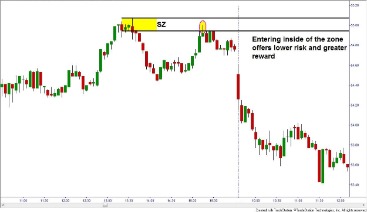Contents
On the other hand, the bear market is the exact opposite of the bull market. During the bear phase, investor sentiments are negative, the economy may not be in good shape, and GDP numbers may be dropping. As a result, investors panic and start to withdraw their funds from the share market to invest in safer options such as Fixed Deposit and Gold.

Therefore, defensive stocks are stable in both economic gloom and boom cycles. These are industries such as utilities, which are often owned by the government. They are necessities that people buy regardless of economic conditions.
When the price of the security is high, you’ll buy a lower number of shares, and when it’s low, you’ll buy a higher number of shares. These funds tend to replicate the movements of the index they follow, so if the index is doing well, your investments should be doing well, too. Bull markets are often categorized as secular or cyclical (indicating a shorter-term period of growth). In the last decade, there have been two occasions where the long-term moving average was violated but did not lead to a longer-term change in the trend. Bear in mind you need to make adjustments to your trading and use the right tools when economic conditions change. There is no point in holding on to your bearish trading system when the market is running bullish and vice versa.
Wrap Up: What Is the Difference Between a Bull and Bear Market?
When it comes to investing, there are several different factors to consider. Perhaps the most important factor is whether we are in a bull or bear market. Investing in over-the-counter derivatives carries significant risks and is not suitable for all investors. Retail Clients of Australia and New Zealand are given the added protection of negative balance protection. This means that you cannot lose more than the amount of money invested with us.
- Generally speaking, a bear market is one that is showing signs of a decline.
- There is no point in holding on to your bearish trading system when the market is running bullish and vice versa.
- Investing involves risk, including possible loss of principal.
- For example, if the stock market has risen by 20% or more over the past years, it is considered to be in a bull market.
- Interest rateInterest rate cycle is on an uptrend and foreign investors get attracted to the high interest rate environment.
https://en.forexbrokerslist.site/ advisory services are only provided to investors who become Stash Clients pursuant to a written Advisory Agreement. Timing the market means trying to predict when the stock market will go up or down. Some people try to time the market by looking at economic indicators, such as interest rates, inflation, and unemployment. Others use technical analysis, which looks at things like support and resistance levels and moving averages. There are many different ways to measure whether we are in a bull or bear market.
Using different trading tools for different market types
However, taking the same leverage could be https://topforexnews.org/y when there is no positive momentum in the market or, in other words, during the bear phase. The experts always suggest limiting the margin trading during the falling market as it could widen the loss in case the share price starts dropping. When we’re in a bullish market, yields on securities and dividends will be lower than those of a bear market. We want higher yields and dividends in a bullish market to lure investors in with the promise of higher yields at a later date.
If you’re unsure of how to rebalance your https://forex-trend.net/ appropriately to match your timeline and willingness to take on financial risk, check out our guide to retirement savings here. You may also want to consult with a financial advisor to make sure you have the right diversification and investment mix. Market timing is notoriously difficult, and you never know when the market is going to hit its bottom. Of course, it comes down to consistency, the ability to stay focused, and strategic thinking so you can see the opportunities and how you can benefit, even while others are reacting.

Stash does not guarantee any level of performance or that any client will avoid losses in the client’s account. By using this website you agree to our Terms of Use and Privacy Policy. Well, there is also a stable market that offers financial instruments giving a fixed return over time. In the past, the global recession that was triggered by the collapse of Lehman Brothers in the US led to a very long bearish run in the global markets, including India. To remember which is which, remember that bulls are known for being aggressive and charging ahead, , while bears are known for hibernating .
During the bull phase, investors are positive about investing in the equity for better returns, and the market rewards them fairly. In a bullish market, we see a lot of liquidity flowing into the market. This is due in large part to investors actively pumping more and more funds into the market. That coupled with increased trading activity and investing in stocks, gold, real estate, etc. results in a bull market. Nonetheless, in a bearish market, the liquidity dries up and the investments made during a bullish scenario are either sold preventing further downsides or held back.
The longest bull markets in history
The markets have a pessimistic approach, and the prices of assets are either in decline or expected to fall in the immediate future. It will cost investors a lot of money as security prices fall across the board, and investor confidence is also expected to hit. The longest bull market on record for stocks occurred between 1990 and 2000. Not surprisingly, it also provided the highest returns, as measured by the S&P 500.
You want to be a successful stock investor but don’t know where to start. No one really knows the true origin; however, what is important is remembering what a bull market means. Equity investment options involve greater risk, including heightened volatility, than fixed-income options.

Short Selling is a trading strategy designed to make quick gains by speculating on the falling prices of financial security. It is done by borrowing the security from a broker and selling it in the market and thereafter repurchasing the security once the prices have fallen. The 4% Rule states that you can safely withdraw 4% of your retirement portfolio the first year you retire. Then you can safely withdraw the same based amount each year, adjusted for inflation, without running out of money for at least 30 years and in some cases up to 50.
Like bull market, the term usually refers to the stock market, but it can also be used in the context of real estate, currencies, and other commodities. There’s no formal metric to measure when a bear market is happening, but a 20% decline in prices is sometimes used as the threshold. Most of the time, investors lose their confidence and exit in the bear market itself by booking losses.
Bull vs. bear market: What’s the difference?
During a bullish market, you will see substantial economic growth. On the contrary, the economy in a bearish market will either fall or not grow at all. A key point to remember is an indicator like the GDP will give you a bird’s eye view of how the economy is performing based on the existing factors. Usually, a bull market happens when the economy is strong or getting stronger. High employment rates, high gross domestic product, and other measures of economic well being and stability are generally thought to correlate with bull markets.
It’s a natural instinct to want to immediately respond to a loss in value, so skirt around that knee-jerk reaction bychecking up on your investments as little as possible. You can see how, as an investor, understanding these two scenarios is key to determining what to do with your money. Expansionary PoliciesExpansionary policy is an economic policy in which the government increases the money supply in the economy using budgetary tools. It is done by increasing the government spending, cutting the tax rate to increase disposable income etc. In the market with prices and trading volumes continuing to rise. Investors’ confidence heads towards pessimism and can create a situation of panic.
MOSES is a stock market index ETF investing system designed to help you beat the market’s performance by avoiding major stock market crashes. There are five core indicators in the Moses strategy; you can use the best approach to eliminate most losses and compound your investments to beat the market. In the stock market, the terms bulls and bears are commonly encountered which indicates, how the stock market is doing, at a particular time. For the novice investors, these terms are a bit confusing, but one can easily understand the two, by analysing the attacking style of the two animals, which determines the movement of the market. Though bull markets offer plenty of opportunities to make money and multiple existing investments, such situations do not last forever.
Markets rise and fall and phases of bull runs and bear periods occur; how you maneuver the journey will determine whether you are going to emerge a winner or a loser. A bull and bear market phase occurs due to various economic factors. Historically, it is seen that both phases occur one after the other, in alternation. Because the businesses whose stocks are trading on the exchanges are participants in the greater economy, the stock market and the economy are strongly linked. Unlike bears market where one can find weak market indicators.
